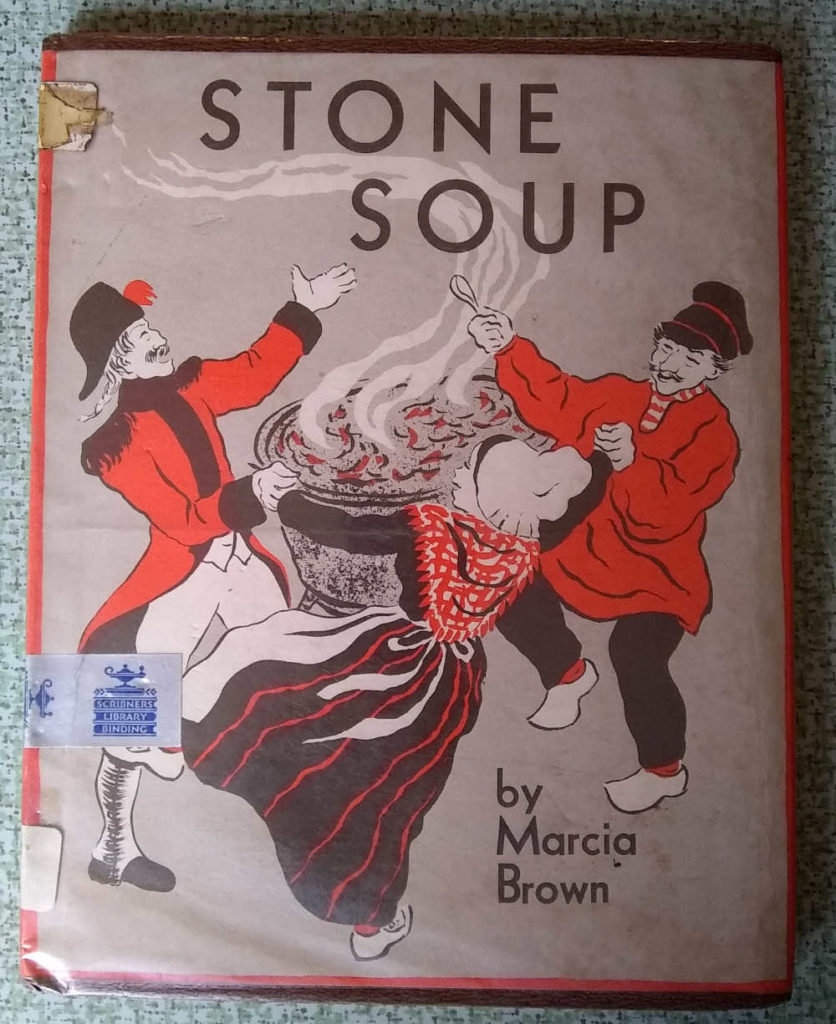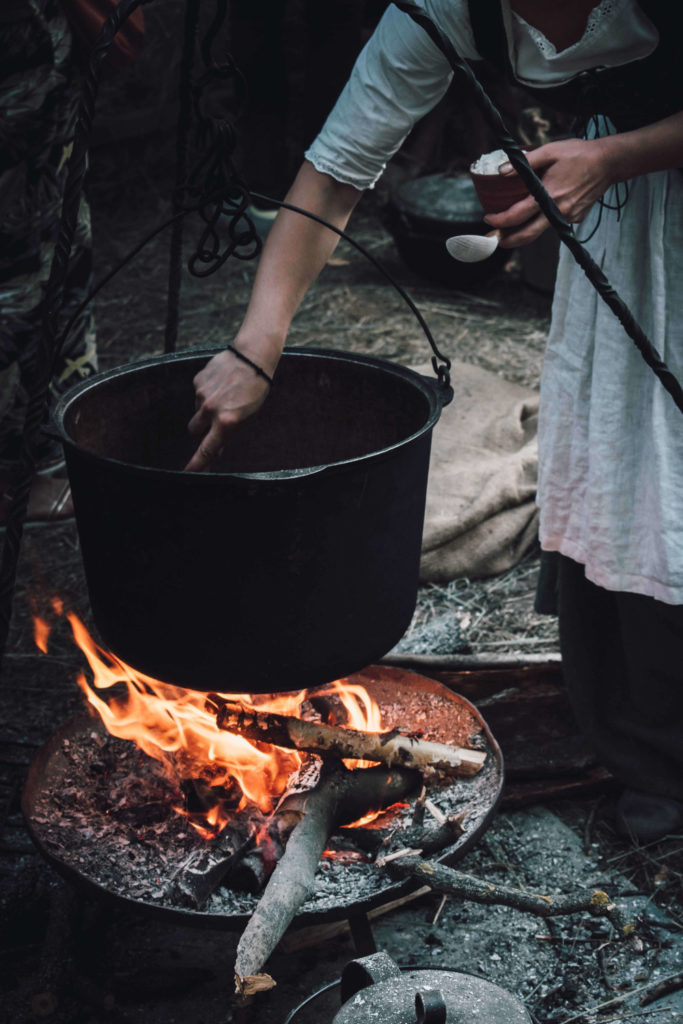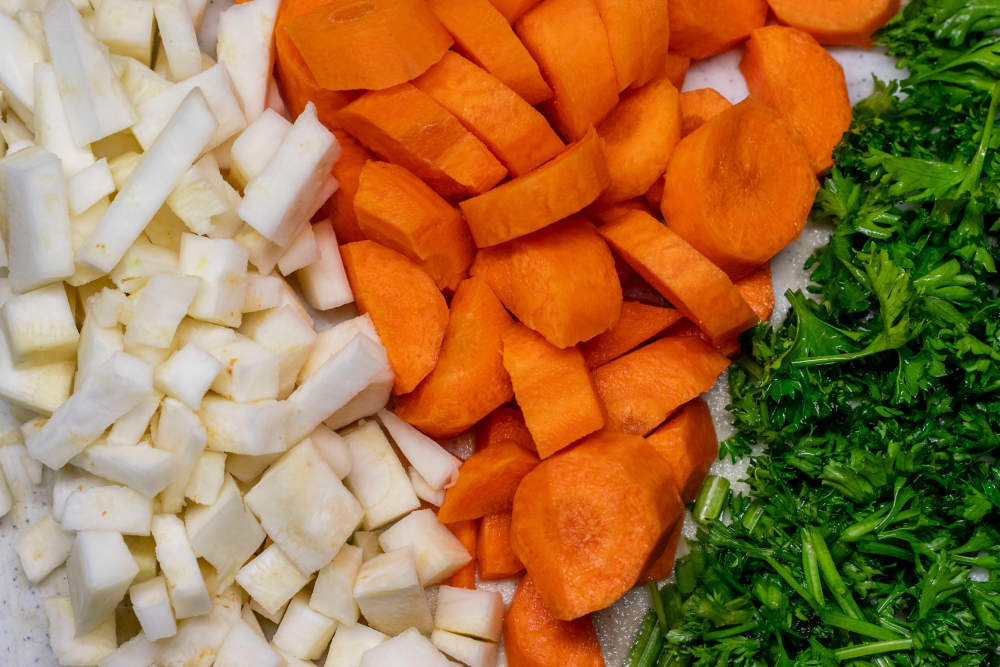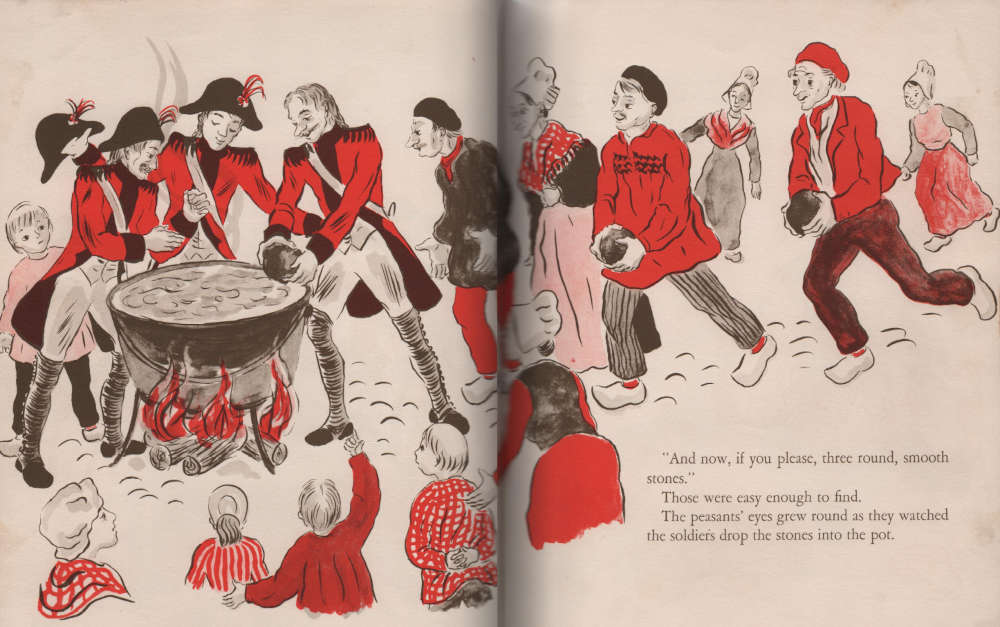In the mid 1960’s when I was 6 or 7 years old I attended St Michael’s Catholic School in Union City, New Jersey. We had a class activity called “Library” and it involved walking as a group from our classroom to the school’s library room where we were free to select a book to borrow for the upcoming week. These books were available to us at no cost as long as we returned the book the following week. If we held the book for any longer than that first week we were charged a fine of $0.05 per week.

Even at that early age my interests ran toward food and cooking and one of my favorite books was Marcia Brown’s “Stone Soup”. It tells a story of 3 soldiers who march into a French village. Ms Brown tells us that the village folk knew the soldiers would be hungry and so they hid all of there food. When the soldiers asked for a crust of bread the villagers, trying to look as hungry as they could, told them their cupboards were bare. Apparently this was not the first stingy village these soldiers had traveled through because they were ready with a Chef Hack of their own.
They told the good people of Hungrytown not to fret because they were about to be taught how to make soup out of stones! When the soldiers said “stones” they were not talking about some exotic culinary ingredient. They meant any stone the townspeople could pick up off the ground. Since detail is the key to credibility the soldiers made sure to let the people know that the biggest, smoothest and roundest stones make the best soup.

Photo by Artem Maltsev on Unsplash
They called for a fire, a pot, water and 3 smooth round stones. When the villagers asked if this would truly result in soup a soldier responded by telling then that it would indeed and that it would be even better if they added a carrot. One of the villagers went to their food stash and returned with a carrot and into the soup it went. “If only we had some cabbage it would be even better!”, the soldier said. The cabbage was produced. Next, if only they had a potato. Done. Some meat? No problem. Barley? ‘Got your barley right here! So it continued, one ingredient at a time until they had made a great big cauldron of delicious Stone Soup and they all feasted!
What is the moral of the story? French soldiers of yesteryear were sneaky? Villagers are easily fooled? I don’t really know…I was only 6 or 7 at the time. Maybe there is no moral. Still I’m reminded of this story every time I open my kitchen freezer because of one of my simplest hack’s. I don’t use stones but I do use something else that is available essentially at no cost to make something nutritious and tasty. You may even be doing this hack already. Read on!

The Simplest Of Hacks
I remember learning that the beef industry pride themselves on wasting nothing that the animal provides. I hate waste, especially food waste so I like the idea of squeezing every bit of value from the things we eat. To this end I use the simplest of hacks.
We eat salad just about every day. This is so well know about my wife and I that my niece and nephew gave us a high end ceramic salad bowl as a Christmas gift one year! The salad we normally eat is based on romaine and iceberg lettuce and always includes celery, carrot, and occasionally, fresh onion so I end up trimming the rough ends from a lot of celery, carrots and onions. Celery, carrot and onion are also the ingredients for a mirepoix, the base flavor items that underlie many soups, stocks and sauces so all of those cut ends go into a plastic bag and the plastic bag goes into my kitchen freezer. Then, when I make stocks or sauces, rather than cutting up additional vegetables I just use the frozen ends. I even use them to flavor the inside cavity when I roast a whole chicken or turkey. The result is breast meat that remains moist and flavorful. Of course all of theses ends are never eaten. They are discarded once their flavors have been rendered in the sauces, stocks or birds.

I’m not a purest when it comes to saving these vegetable ends and in addition to celery/carrot/onion I have been known to include the ends and trimmings of others such as cabbage, Brussels sprouts, mushroom stems and tomatoes. Almost any vegetable is useful. Just avoid adding trimmings from green or red peppers else every soup or stock you make will taste primarily of those ingredients.
So join me and try this simplest of hacks to start saving money while being rewarded with more flavorful dishes.
Oh…one more thing…I was cleaning out my basement and came across St Michael’s Library’s copy of “Stone Soup” that I apparently forgot to return in 1966. What does $0.05 times 52 weeks times 55 years come out to? With interest.



St Michael’s school in Union City, NJ that is referenced in this blog post is no longer. Several years ago I drove by the site of the school and found that a huge new public school building then sat in it’s place. Although much is written about the closing of the related St Michael The Arch Angel Monastery, I can find no references to the school’s closing on the internet. If any reader can shed any light on the closing please share it in these comments.